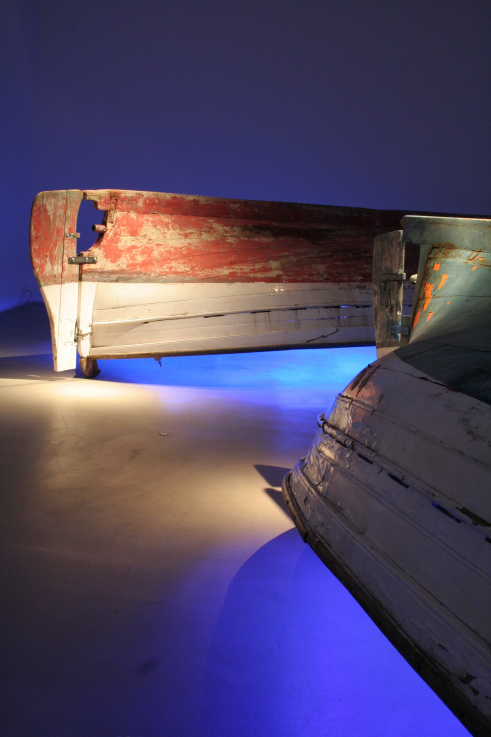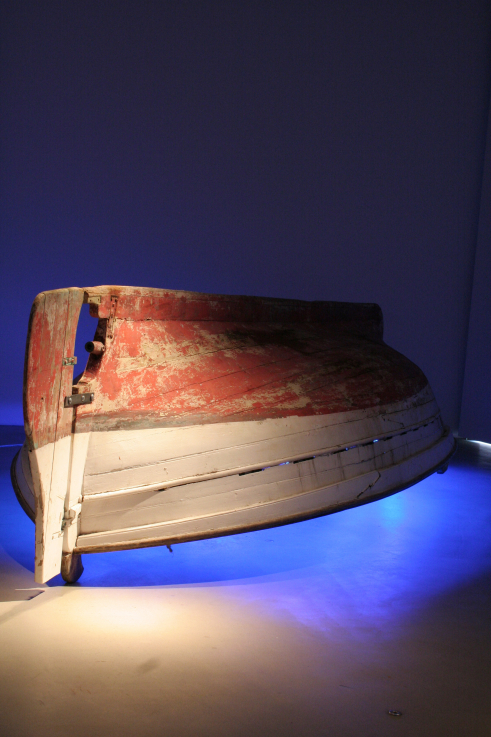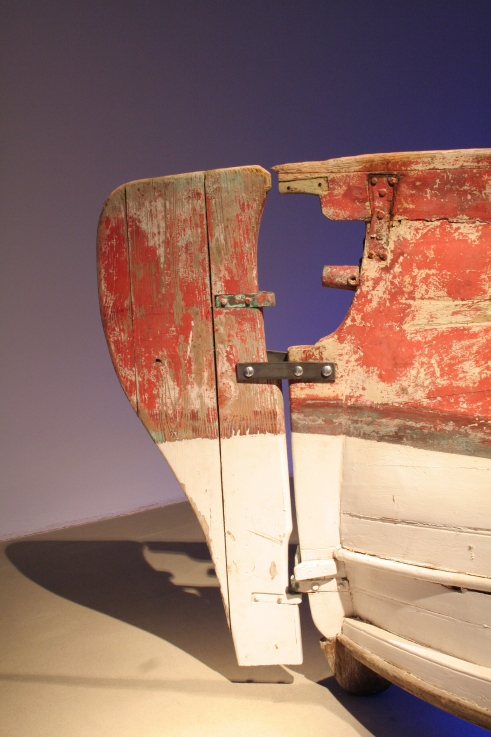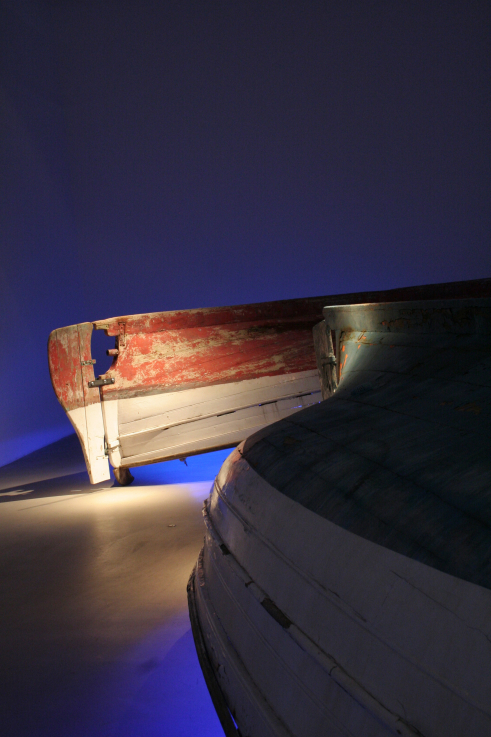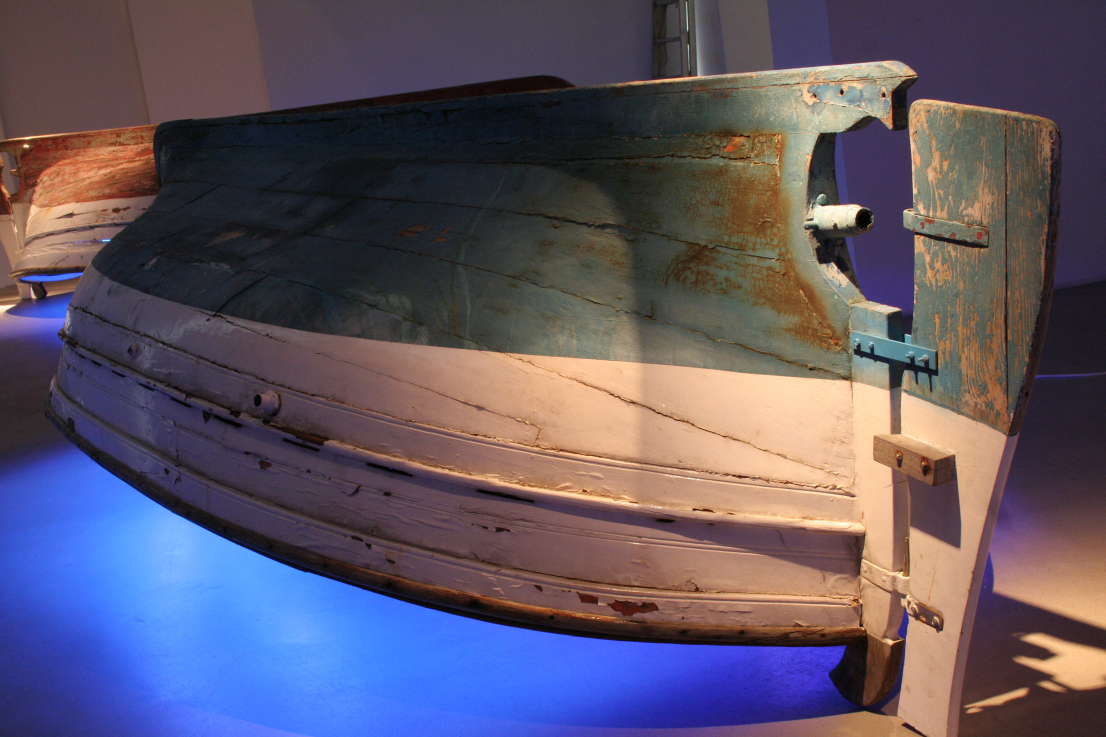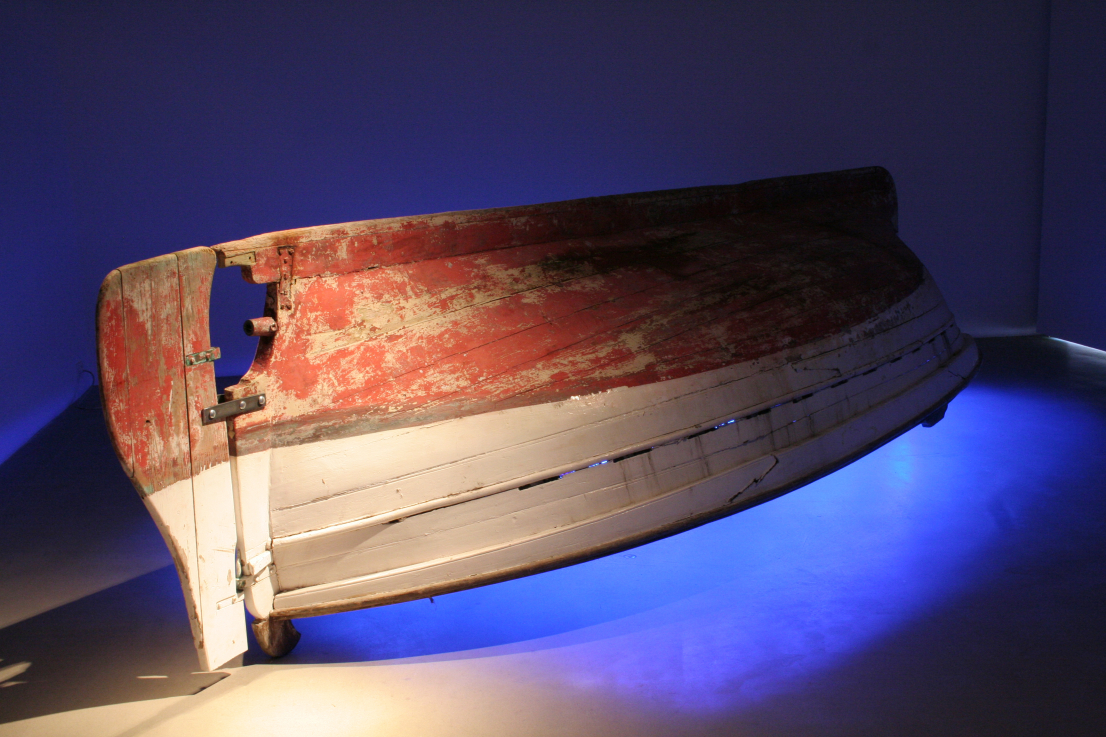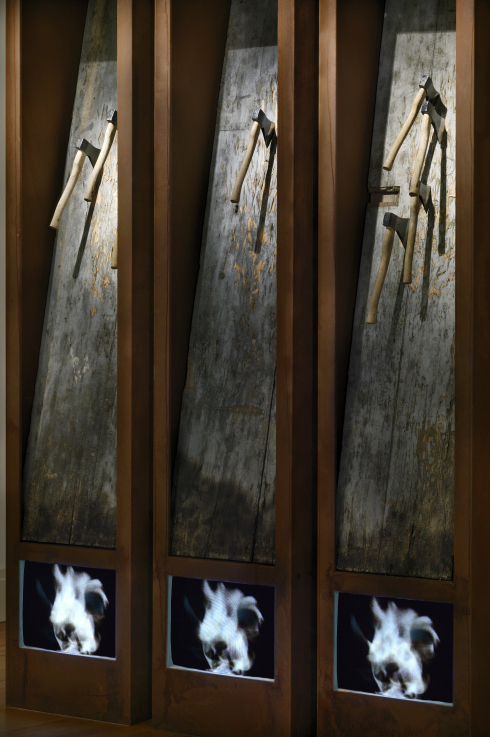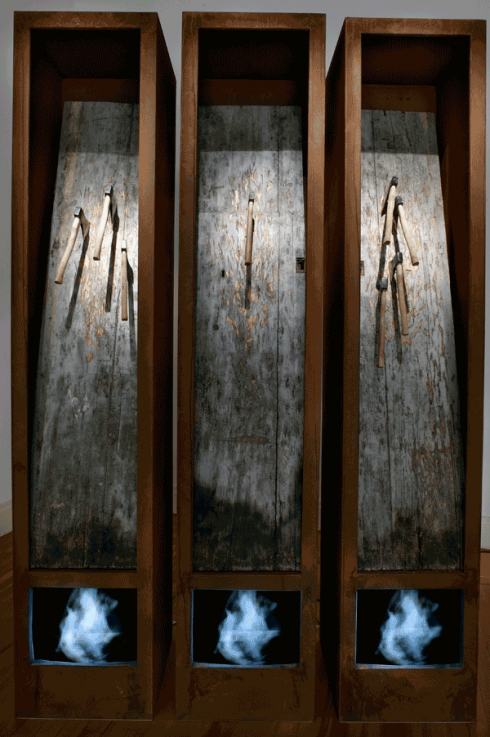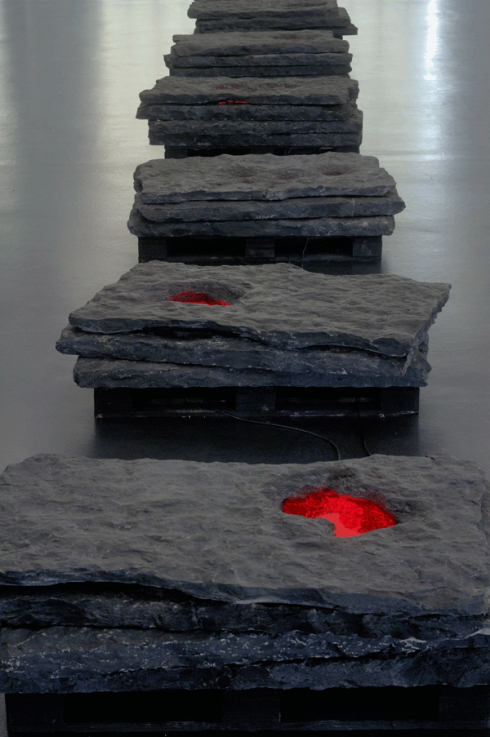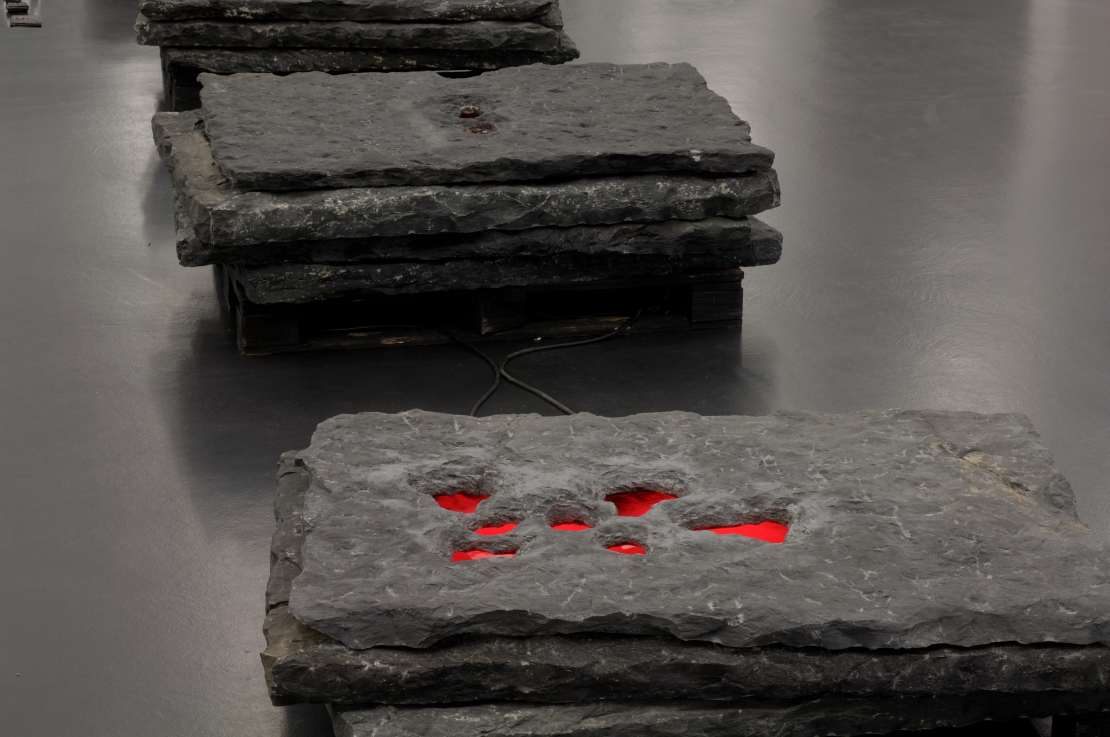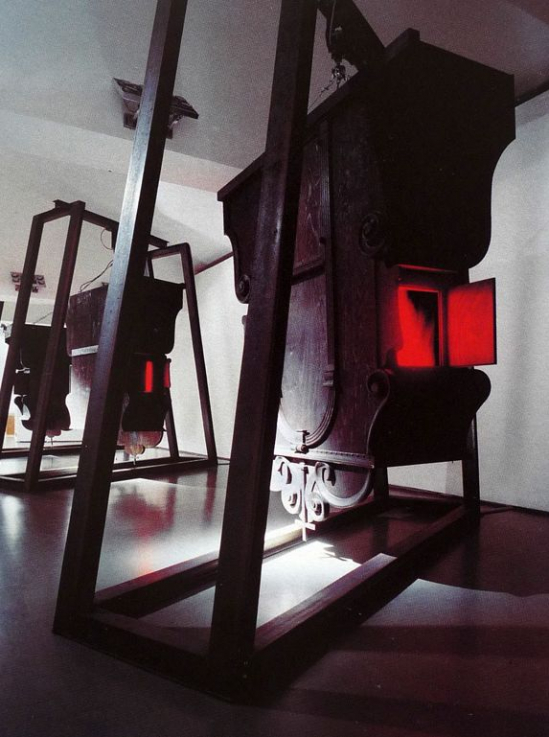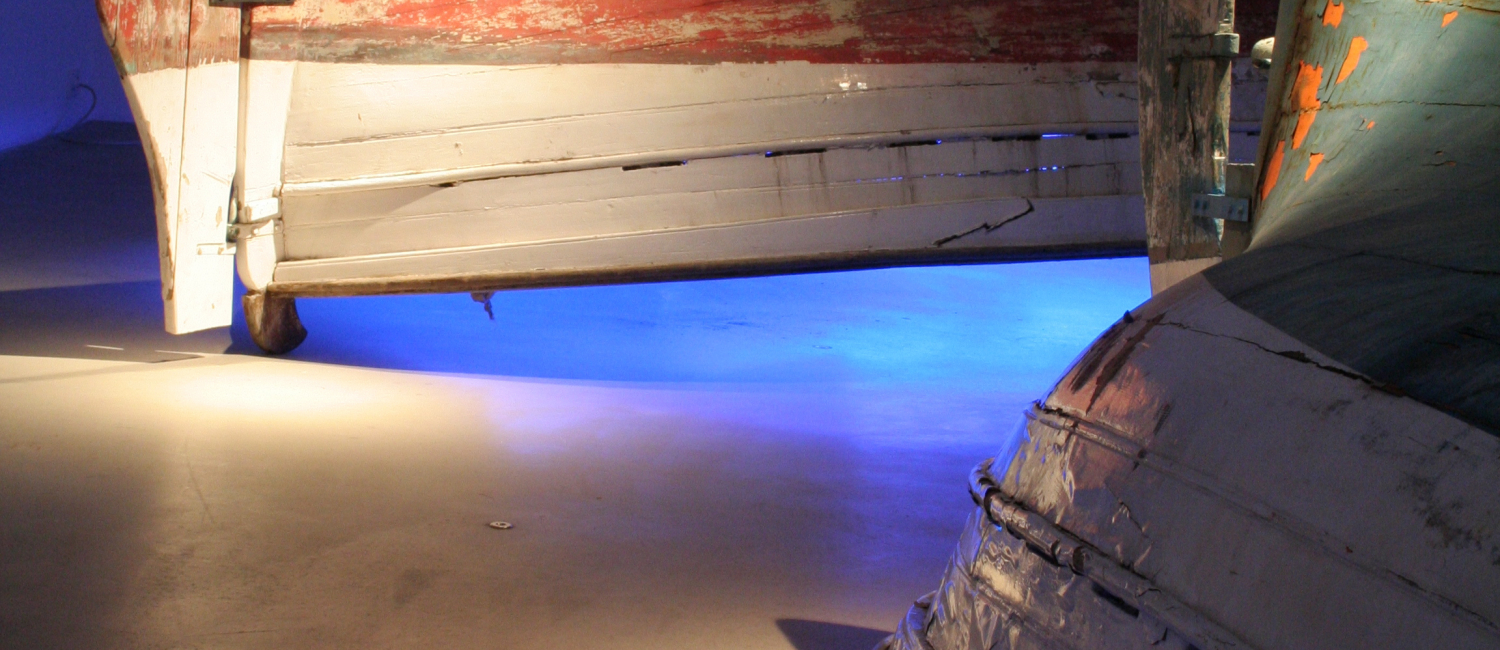30 January - 13 April 2014
Fabrizio Plessi is one of the most popular contemporary Italian artists, who has become worldwide known for his large size, spectacular video installations. He showed his works to the public around the world in several remarkable exhibitions, at almost every leading art institutes and museums in Europe, America and the Far East. He participated 14 times in the Venice Biennale alone. Lately, the newly renovated Venezia pavilion re-opened with his solo exhibition.
In his artworks Fabrizio Plessi merges modern technology, moving image and sound with the simplest materials like wood, stone or corroded metal sheets, in a most natural way. For most of his works, he uses moving and at the same time perpetual images of the four classical elements, or different natural phenomena to represent the inexhaustible strength of nature. Understandably, the artist who moved to Venice from Emilia in the beginning of his career, in 1954, at the age of 14, became “obsessed” with water. Later on, fire (lava and lightning) was also given an important role in his art. His spectacular works, often of large dimensions, usually exercise a deep impact on the audience, and it is almost impossible to remain unaffected. Since Fabrizio Plessi has never exhibited earlier in any of the post-communist countries (apart from a smaller group exhibition in Ljubljana in the 1980’s), this exhibition at the Ludwig Museum aims to present all important aspects of his artistic world in order to give the Hungarian public a comprehensive view of his life and works.
The most spectacular piece of work in this exhibition is the installation titled Llaüt Light that – through an actual social problem (namely, on Mallorca, which is the artist’s second home, old fishing boats were destroyed for reasons of environment protection) reflects the eternal conflict: preserving tradition against development. As it were, the artist erected a monument of Past and Tradition. Plessi’s work – while underlining merits of the past – facilitates collective thinking as well as helps finding adequate solutions. A musical accompaniment written by Michael Nyman for this express purpose completes the artwork, giving a perfectly wholesome artistic experience. He has been working together with Michael Nyman for decades. One of Plessi’s first stage work had been the complete stage and costume design for a Nyman opera in 1989.
Apart from this peculiar artwork, four other sizeable installations feature in the exhibition. The Trittico della violenza (Triptych of violence) is part of the artist’s so-called cabinet-series: everyday objects put on display in elongated metallic cases; here: axes cut into old wooden doors – with a perpetual projected image of lightning beneath them. Flashes embody and evoke rather sensibly the strength and ruthlessness, steeliness of an axe strike.
The installation Liquid Tables presents the most characteristic element of Plessi’s artistic world: the moving image of continuously streaming water, appearing this time on the screens fastened to the back side of the tabletop of the tables leant against the wall. Table are often present in Plessi’s works as a reference to his own drawing desk used for his daily work, but by the means of this, also to the altar mensa, which is a place of getting into touch with the powers above as well as immolation. Here, these tables appear as objects placed out of orders as though the right time for work or immolation has not arrived yet.
The installation titled Movimenti catodici barocchi (Baroque cathodic movements) was inspired by a journey to Naples. The Baroque confession box hung upside down from the ceiling circulates around menacingly. In its windows – from where one should expect absolution from the priest – there is only penitence: no more than the threatening image of the blaze on the screens placed within the confessional box. This work evoking spectacles of the Baroque period, induces self-reflection.
The installation Lava is built of real lava stone slabs. Through the holes carved in the surface one can see the image of the fluid, red lava, just as in the nature when following an eruption, the petrified as well as the fluid red lava both run down on the volcano slope. The surface “freezes” solid very soon, but the melt stone keeps glowing for a long while underneath.
Our exhibition also features fresh works: a series, made recently when an accident forced Plessi – who is otherwise very active and lively person – to spend a few weeks in a wheelchair. This period of forced rest induced him to self-reflexion, and he began to draw down anew his earlier installations, then magnified and overpainted them. This series titled Liquid Labyrinth was completed last August, and is put on public display first time ever. On the one hand, with this series – 16 pieces of overpainted, large print – Plessi returned to painting, on the other hand, he summarized his drafts made for his earlier installations.
One of his critics, Edward Lucie Smith, claims Plessi to be the heir of Baroque stage directors. As a matter of fact, the illusion evoked by his moving images is indeed closely linked with Baroque illusionism. As he lives in a Baroque palace decorated with frescos and stuccos he is – so to say – on very friendly terms with Baroque art.
Plessi’s relation with new technologies can be described as positively traditional. It is not a coincidence that he was teaching a course titled Humanizing technology for about 10 years, at the Kunsthochschule für Medien in Cologne.
Plessi works with very simple motives that open up an unusual wide range of associations for the viewer. His symbols are so universal, clear and settled, his works are so palpable that they give an unforgettable experience even to those visitors who are not well-acquainted with contemporary art.
The exhibition is organized by the Ludwig Museum – Museum of Contemporary Art, Budapest in collaboration with the Ludwig Museum, Koblenz.
